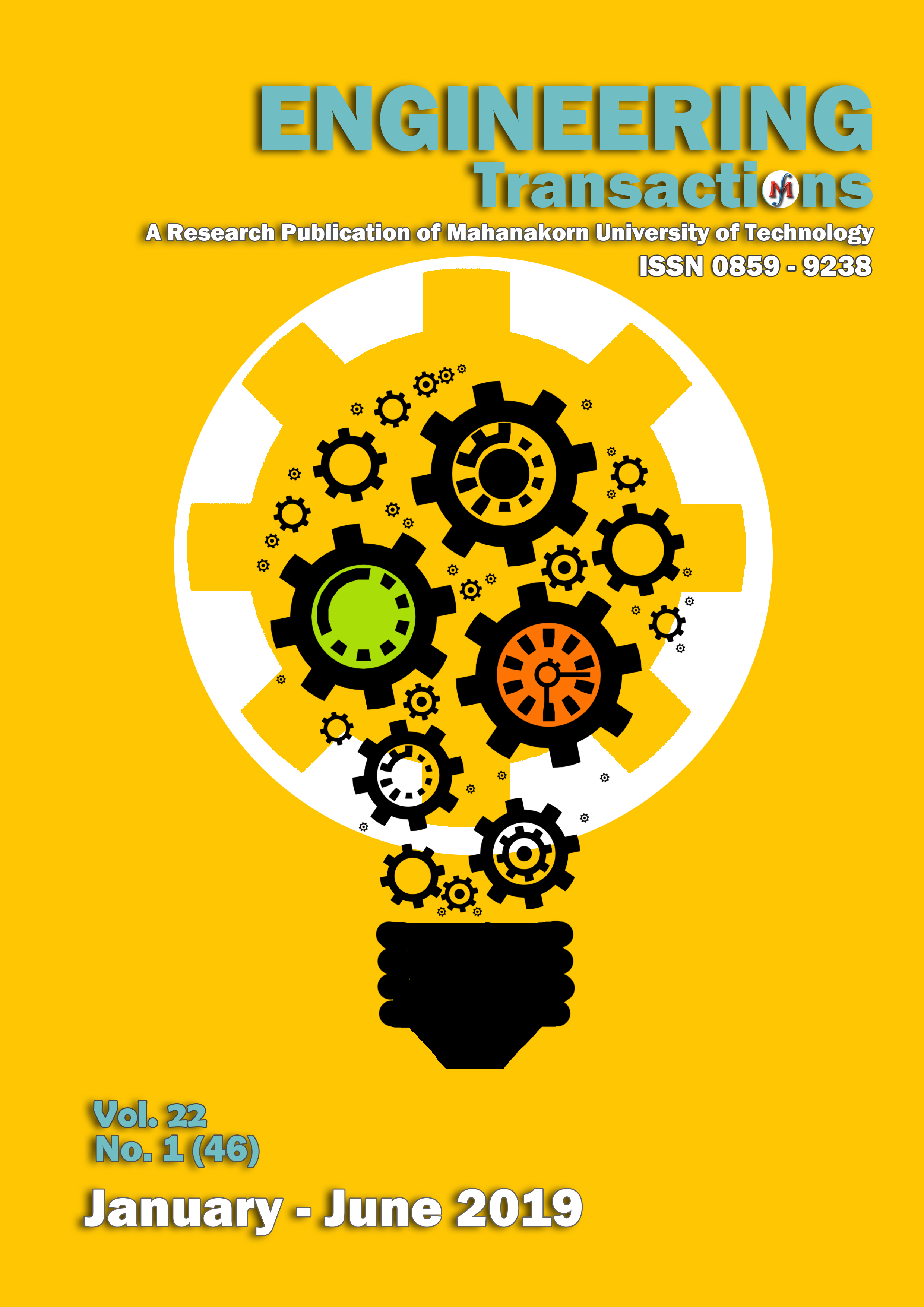Mahanakorn Satellite Receiving Station Part I : System Architecture and Preliminary Results
Main Article Content
Abstract
This paper presents the Mahanakorn Satellite Receiving Station (MARS). The requirements on downstream applications are proposed to select the type of sensors on-boarded the direct broadcast satellites. The communication concern and link budget are taken into account for choosing the suitable COTS (commercial-off-the-shelf) RF module for setting up ground receiving station. The MARS architecture consists of three major subsystems; antenna subsystem, acquisition subsystem, and data processing & solution subsystem. In the antenna subsystem, the dedicated X/L band 2.4 metre parabolic antenna mounted on 3-axis positioner is performed to track and receive satellite signals. The COTS of RF feeder, LNA (Low Noise Amplifier) and RF downconverter is performed for providing IF (Intermedia Frequency) signal. The COTS DSP (Digital Signal Processing) based digital receivers are used in the acquisition subsystem. The operational aim of MARS is to receive the direct broadcast signal from Earth Observing Satellites (EOS) which are orbiting in LEO (Low Earth Orbit). The MARS has capability to track and receive the series of NASA’s EOS and NOAA’s EOS. Preliminary testing of satellite signal tracking and satellite images production are performed for verifying the system capabilities.
Article Details
Copyright @2021 Engineering Transactions
Faculty of Engineering and Technology
Mahanakorn University of Technology
References
M.N. Sweeting and S. Pookyaudom, “TMSAT: Thailand's first microsatellite for communications and earth observation”, Acta Astronautica, Volume 40, Issues 2-8, pp. 423-427, January-April 1997.
P. Sirisuk, J. Paffett and M Allery, “Digital Voice Broadcaster Realization using Digital Signal Processing Experiment Palyload on TMSat Microsatellite”, Proceedings of 19th Electrical Engineering Conference (EECON-19), Khon kaen. November 7-8, 1996.
S. Channumsin, P. Udomthanatheera, C. Kositratpat charasuk, and M. Aorpimai, “Development of an Orbital Trajectory Analysis Tool”, Eng. J., vol. 21, no. 7, pp. 123-139, Dec. 2017.
M. Aorpimai, P. Navakitkanok, and S. Jantarang. “Automated flight dynamics system for Thaichotes satellite operation,” in 2nd IAA Conference on Dynamics and Control of Space System, 2014, Rome, Italy.
S. Manuthasna and S. Bunnjaweht, “CubeSat Multimode Downlink Communication Subsystem”, Proceedings of 40th Electrical Engineering Conference (EECON-40), Chon Buri, November 15-17, 2017.
http://www.icare.univ-lille1.fr/
http://www.igs.gnsswhu.cn/index.php/Home/Index/ index.html
C. L. Parkinson, “Aqua: An Earth-Observing Satellite Mission to Examine Water and other Climate Variables”, IEEE Transactions on Geoscience and Remote Sensing, Vol. 41, No 2, Feb. 2003, pp. 173-183.
J P. Chamoun, C. Connor, M. P. Hughes, R. P. Kozon, E. Moyer, R. E. Quinn, "Terra Spacecraft Deep Space Calibration Maneuver design and Execution," Proceedings of the 27th annual AAS Guidance and Control Conference, Breckenridge, CO, Feb. 4-8, 2004, Guidance and Control 2004, Volume 118, ed. by J. D. Chapel and R. D. Culp, pp. 573-591, AAS 04-075.
P. G. Edwards, B. Berruti, P. Blythe, J. Callies, S. Carlier, C. Fransen, R. Krutsch, A.-R. Lefebvre, M. Loiselet, N. Stricker, “The MetOp Satellite - Weather Information from Polar Orbit,” ESA Bulletin, No 127, Aug. 2006, pp. 8-17.
https://www.wmo-sat.info/oscar/satellites
Earth Observation Portal, Aqua Mission (EOS/PM-1), https://directory.eoportal.org/web/eoportal/satellite-missions/a/aqua
Earth Observation Portal, Terra Mission (EOS/AM-1), https://directory.eoportal.org/web/eoportal/satellite-missions/t/terra
Earth Observation Portal, MetOp (Meteorological Operational Satellite Program of Europe), https://directory.eoportal.org/web/eoportal/satellite-missions/m/metop
Earth Observation Portal, NOAA POES Series, https://directory.eoportal.org/web/eoportal/satellite-missions/n/noaa-poes-series-5th-generation
G.M. Quinn, A New X-band Satellite Groundstation for Remote Sensing Applications”, Australian International Aerospace Conference, Brisbane, July 2000.


